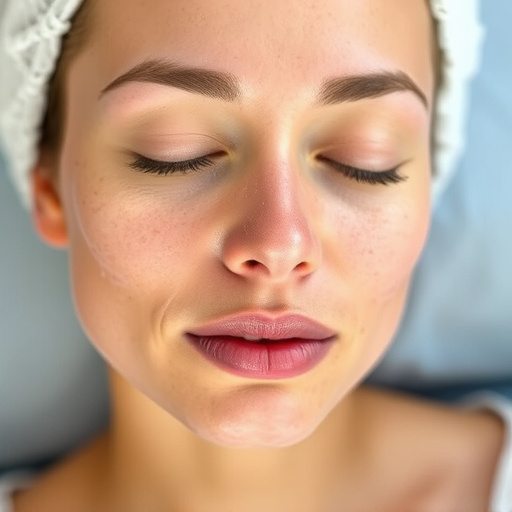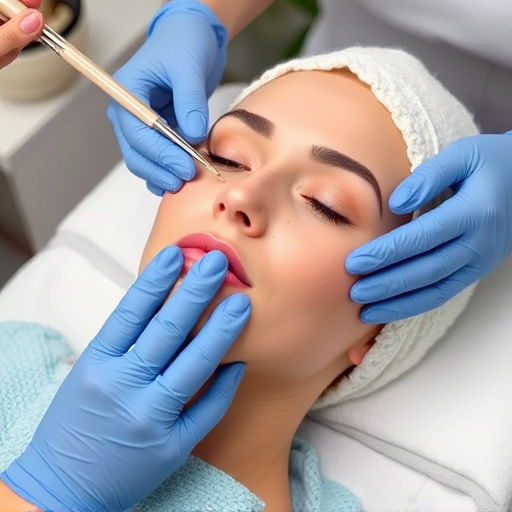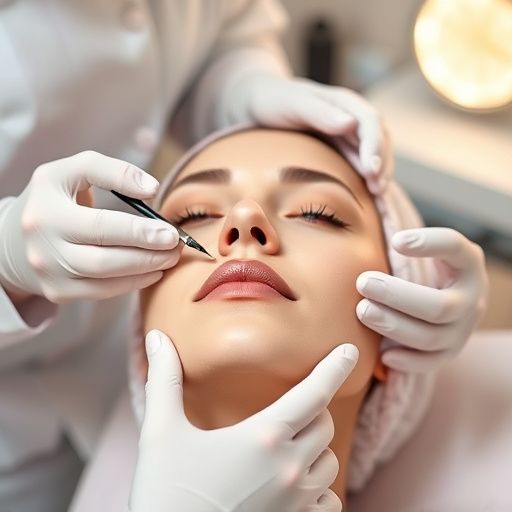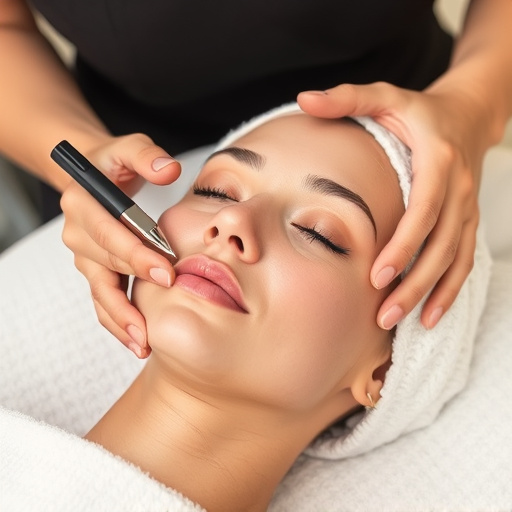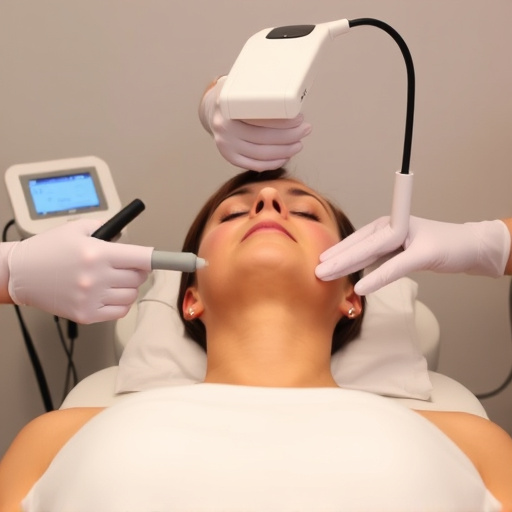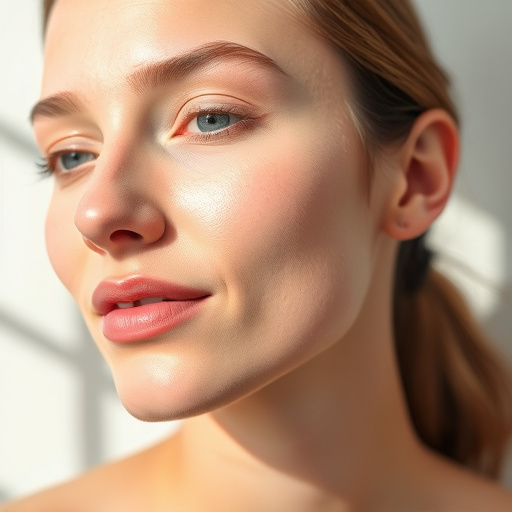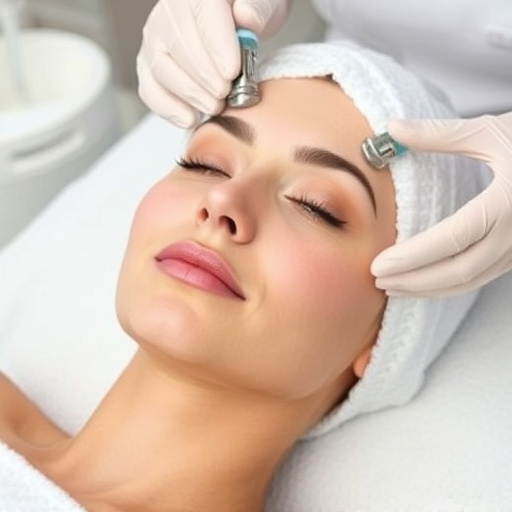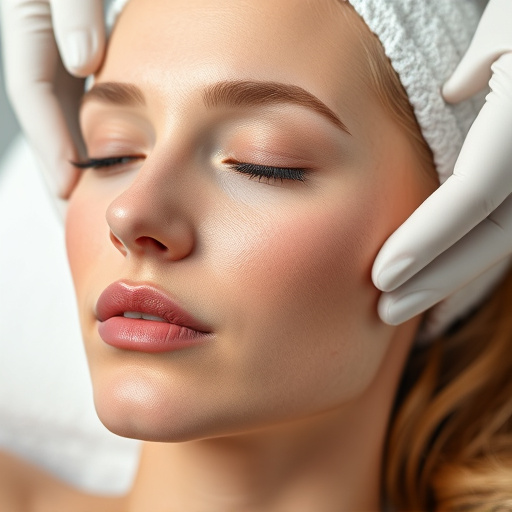Ingrown hair prevention, popularized online, focuses on understanding root causes like improper shaving and micro-tears. Social media influencers promote personalized skincare routines, product recommendations, and non-surgical treatments. Topical treatments, natural remedies (e.g., salicylic acid, AHAs, tea tree oil), and spa facials are effective strategies. Consistent exfoliation and proper shaving techniques further reduce ingrown hairs.
Ingrown hair, a common skincare concern, has recently gained traction on social media as users share their experiences and sought-after solutions. This article delves into the world of ingrown hair prevention, offering insights into its causes and common triggers. We explore popular social media strategies that have sparked conversations online. Additionally, we provide effective topical treatments and home remedies recommended by dermatologists to help you achieve smoother, bump-free skin.
- Understanding Ingrown Hair Causes and Common Triggers
- Popular Social Media Strategies for Prevention
- Effective Topical Treatments and Home Remedies
Understanding Ingrown Hair Causes and Common Triggers

Ingrown hair prevention is a growing concern among social media users, as they share their personal experiences and seek solutions. Understanding the causes behind ingrown hairs is the first step in effective ingrown hair prevention. This common skin issue often arises due to factors like poor shaving techniques, using dull or old razors, not exfoliating regularly, or applying pressure while shaving. These practices can cause micro-tears in the skin, trapping hair follicles beneath the surface and leading to inflammation and ingrown hairs.
Additionally, certain triggers such as tight clothing, intense physical activity, or even specific skincare products can exacerbate the problem. For instance, microneedling therapy, while beneficial for body contouring and improving skin health, may increase the risk of ingrown hairs if not performed correctly. Recognizing these causes and triggers is crucial in implementing effective ingrown hair prevention strategies to maintain healthy, smooth skin.
Popular Social Media Strategies for Prevention

In the digital age, social media platforms have emerged as a powerful tool for sharing knowledge and experiences related to various health concerns, including ingrown hair prevention. Influencers and skincare enthusiasts are leveraging their reach to spread awareness about effective strategies. One popular approach is the promotion of personalized skincare routines tailored to individual needs. By sharing detailed skincare regimens and product recommendations, these influencers help their followers understand the importance of a customized approach to prevent ingrown hairs.
Additionally, many social media campaigns focus on non-surgical treatments as a less invasive alternative. Acne treatments, often linked to ingrown hair formation, are a common topic. From chemical exfoliants to laser therapy, users share their experiences and success stories, encouraging others to explore these modern solutions. This trend has led to a growing interest in seeking professional advice and exploring innovative techniques for effective ingrown hair prevention.
Effective Topical Treatments and Home Remedies

Many people are turning to topical treatments and home remedies as part of their ingrown hair prevention routine. Over-the-counter products containing ingredients like salicylic acid, alpha hydroxy acids (AHAs), or benzoyl peroxide can help exfoliate the skin and clear blockages that lead to ingrown hairs. These ingredients gently slough off dead skin cells, promoting healthier hair growth and reducing the chances of ingrowns.
Additionally, natural home remedies like tea tree oil, known for its antibacterial properties, and aloe vera, which soothes and hydrates the skin, are gaining popularity. Customized facials at spas or dermatological clinics can also address specific concerns related to ingrown hair prevention. By combining these effective treatments with consistent exfoliation and proper shaving techniques, individuals can achieve smoother, healthier skin and bid farewell to unsightly ingrown hairs.
As we’ve explored, understanding the causes and triggers of ingrown hairs is a crucial step in their prevention. Social media has emerged as a valuable resource for sharing effective strategies, from exfoliation routines to innovative topical treatments. By adopting these practices, along with home remedies like sugar wax or apple cider vinegar soaks, individuals can actively manage and reduce the occurrence of ingrown hairs. Ingrown hair prevention is not just a beauty trend; it’s a proactive approach towards achieving smoother, healthier skin.



